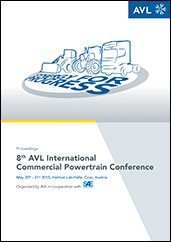Technical Paper
145 - 210 Horsepower Agricultural Tractor Noise Reduction Program
1993-09-01
932434
This paper summarizes the techniques and guidelines which were used to reduce the driver perceived noise level of a 145-210 HP series of agricultural tractors. Graphs of case study test results and comments on subjective noise quality are provided to guide the acoustic novice through the complexities of the vehicle sound environment in a methodical problem solving format.



